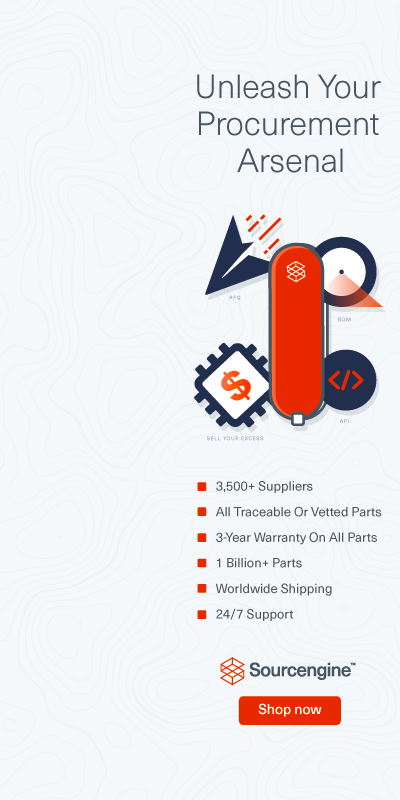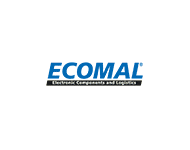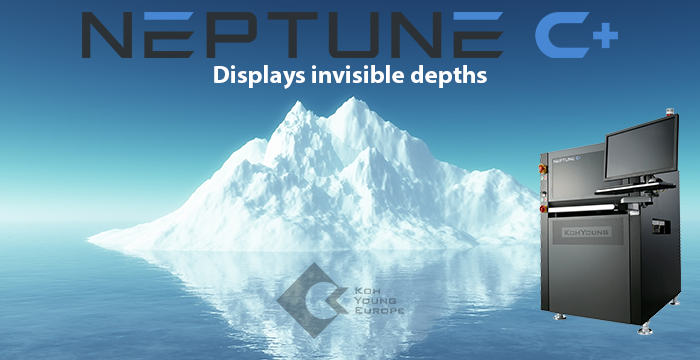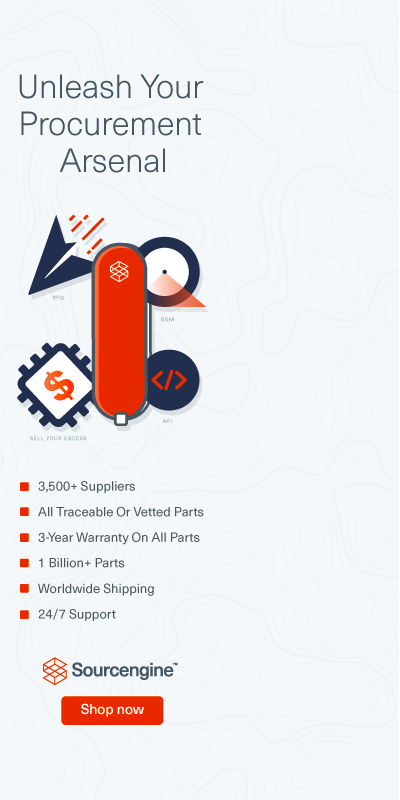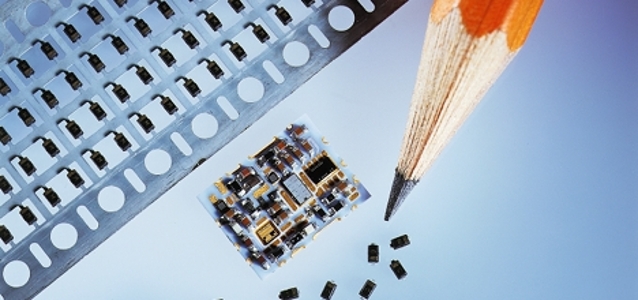
© Infineon
Components |
Intel, TI & Toshiba always been Top10 material
Only Intel, TI, and Toshiba have been part of the Top 10 ranking since 1985.
Periodically, it is interesting to look back and see how the semiconductor industry has evolved over time. Although technology has advanced at a fantastic rate since 1985, the names and number of companies manufacturing semiconductors has changed greatly, too.
Beginning in 1985, NEC held the #1 slot with sales of $2.1 billion. Four other Japanese companies were ranked among the top 10. By 1990, Japanese semiconductor companies occupied the top three positions, led by NEC, which more than doubled its semiconductor sales over the five-year span to $4.8 billion. Six Japanese companies were represented among the top 10 semiconductor suppliers in 1990--a figure that has not been matched by any country/region since.
 The figure traces the changes to the top 10 semiconductor companies in roughly 5-year increments. / © IC Insights / The image has zoom-function.
By 1995, Intel was the largest semiconductor supplier. (IC Insights' records show that Intel became the #1 semiconductor supplier in 1993 and has remained firmly entrenched in that position ever since.) Also in 1995, South Korean semiconductor players made their presence felt as Samsung and Hyundai (now Hynix) appeared in the top 10 list. No European companies were present among the top 10 suppliers in 1995. Total semiconductor sales for the top 10 climbed to $86.3 billion, an increase of 171% from 1990.
In 2000, Intel put considerable distance between it and Toshiba, the #2 supplier. Intel's sales were nearly 3x greater than Toshiba's that year. European suppliers made a strong comeback with the three big players--ST, Infineon, and Philips--appearing among the top 10. In 2000, the top 10 semiconductor players had sales of $108.1 billion, a 25% increase from five years earlier.
In 2006, Intel was again firmly in control of first place. Meanwhile, Samsung and NEC were headed in opposite directions in the rankings. Samsung had climbed to the #2 position, a remarkable ascension in a little over a decade, while NEC fell to the #10 position and would later fall from the top 10 ranking altogether.
For 2011, IC Insights counts five U.S. companies, two South Korean firms, one European, and one Japanese company among the top 10 semiconductor suppliers. Intel is expected to hold the #1 supplier ranking again in 2011 (18th consecutive year). Besides Intel, the world's leading MPU supplier, the top 10 supplier list for 2011 features several leading memory suppliers, and two of the world's largest fabless companies--Broadcom and Qualcomm--each a major player in chips used in communication applications. The top 10 suppliers are forecast to have sales of $167.1 billion in 2011, a gain of about 12x since 1985.
IC Insights did not include TSMC in this market ranking since the double counting would mislead in determining marketshare. When we consider the total semiconductor market or market by product type, foundry sales are excluded to get a truer picture of the market. However, TSMC, the world's largest foundry, would have been ranked as the #6 supplier in 2006 with sales of $9.7 billion and would be ranked #3 in 2011 with forecast sales of $14.7 billion!
Through all the cycles, upheavals, management changes, restructuring, economic booms and busts, new gadgets introductions, and new manufacturing technology that has come and gone since 1985, three companies--Intel, Texas Instruments, and Toshiba--have consistently been ranked in the top 10. One could argue that good foresight, good planning, and good management have kept these companies in the top 10 for the past 26 years. However, it doesn't hurt to have a dose of good fortune on your side, too.
Finally, it is worth noting some of the significant changes that resulted in new names appearing and old names disappearing from the list of top 10 suppliers.
1999 -- Hitachi and NEC merged their DRAM businesses to create Elpida Memory.
2001 -- Hyundai changed its name to Hynix following the merger of its semiconductor operations with those of LG Semicon.
2003 -- Hitachi, which previously spun off its DRAM business, merged its Semiconductor & IC Division with Mitsubishi's System LSI Division to create Renesas Technology.
2003 -- Matsushita began emphasizing Panasonic as its main global brand name in 2003. Previously, hundreds of consolidated companies sold Matsushita products under the Panasonic, National, Quasar, Technics, and JVC brand names. In October 2008, the company formally changed its name and the branding of products to Panasonic.
2004 --Motorola spun off its Semiconductor Products Sector (SPS) and the business was named Freescale Semiconductor.
2006 -- Philips Semiconductor was renamed NXP Semiconductors after being spun out of Royal Philips Electronics as an independent company.
2010 -- NEC merged with Renesas Technology to become Renesas Electronics.
The figure traces the changes to the top 10 semiconductor companies in roughly 5-year increments. / © IC Insights / The image has zoom-function.
By 1995, Intel was the largest semiconductor supplier. (IC Insights' records show that Intel became the #1 semiconductor supplier in 1993 and has remained firmly entrenched in that position ever since.) Also in 1995, South Korean semiconductor players made their presence felt as Samsung and Hyundai (now Hynix) appeared in the top 10 list. No European companies were present among the top 10 suppliers in 1995. Total semiconductor sales for the top 10 climbed to $86.3 billion, an increase of 171% from 1990.
In 2000, Intel put considerable distance between it and Toshiba, the #2 supplier. Intel's sales were nearly 3x greater than Toshiba's that year. European suppliers made a strong comeback with the three big players--ST, Infineon, and Philips--appearing among the top 10. In 2000, the top 10 semiconductor players had sales of $108.1 billion, a 25% increase from five years earlier.
In 2006, Intel was again firmly in control of first place. Meanwhile, Samsung and NEC were headed in opposite directions in the rankings. Samsung had climbed to the #2 position, a remarkable ascension in a little over a decade, while NEC fell to the #10 position and would later fall from the top 10 ranking altogether.
For 2011, IC Insights counts five U.S. companies, two South Korean firms, one European, and one Japanese company among the top 10 semiconductor suppliers. Intel is expected to hold the #1 supplier ranking again in 2011 (18th consecutive year). Besides Intel, the world's leading MPU supplier, the top 10 supplier list for 2011 features several leading memory suppliers, and two of the world's largest fabless companies--Broadcom and Qualcomm--each a major player in chips used in communication applications. The top 10 suppliers are forecast to have sales of $167.1 billion in 2011, a gain of about 12x since 1985.
IC Insights did not include TSMC in this market ranking since the double counting would mislead in determining marketshare. When we consider the total semiconductor market or market by product type, foundry sales are excluded to get a truer picture of the market. However, TSMC, the world's largest foundry, would have been ranked as the #6 supplier in 2006 with sales of $9.7 billion and would be ranked #3 in 2011 with forecast sales of $14.7 billion!
Through all the cycles, upheavals, management changes, restructuring, economic booms and busts, new gadgets introductions, and new manufacturing technology that has come and gone since 1985, three companies--Intel, Texas Instruments, and Toshiba--have consistently been ranked in the top 10. One could argue that good foresight, good planning, and good management have kept these companies in the top 10 for the past 26 years. However, it doesn't hurt to have a dose of good fortune on your side, too.
Finally, it is worth noting some of the significant changes that resulted in new names appearing and old names disappearing from the list of top 10 suppliers.
1999 -- Hitachi and NEC merged their DRAM businesses to create Elpida Memory.
2001 -- Hyundai changed its name to Hynix following the merger of its semiconductor operations with those of LG Semicon.
2003 -- Hitachi, which previously spun off its DRAM business, merged its Semiconductor & IC Division with Mitsubishi's System LSI Division to create Renesas Technology.
2003 -- Matsushita began emphasizing Panasonic as its main global brand name in 2003. Previously, hundreds of consolidated companies sold Matsushita products under the Panasonic, National, Quasar, Technics, and JVC brand names. In October 2008, the company formally changed its name and the branding of products to Panasonic.
2004 --Motorola spun off its Semiconductor Products Sector (SPS) and the business was named Freescale Semiconductor.
2006 -- Philips Semiconductor was renamed NXP Semiconductors after being spun out of Royal Philips Electronics as an independent company.
2010 -- NEC merged with Renesas Technology to become Renesas Electronics.
 The figure traces the changes to the top 10 semiconductor companies in roughly 5-year increments. / © IC Insights / The image has zoom-function.
By 1995, Intel was the largest semiconductor supplier. (IC Insights' records show that Intel became the #1 semiconductor supplier in 1993 and has remained firmly entrenched in that position ever since.) Also in 1995, South Korean semiconductor players made their presence felt as Samsung and Hyundai (now Hynix) appeared in the top 10 list. No European companies were present among the top 10 suppliers in 1995. Total semiconductor sales for the top 10 climbed to $86.3 billion, an increase of 171% from 1990.
In 2000, Intel put considerable distance between it and Toshiba, the #2 supplier. Intel's sales were nearly 3x greater than Toshiba's that year. European suppliers made a strong comeback with the three big players--ST, Infineon, and Philips--appearing among the top 10. In 2000, the top 10 semiconductor players had sales of $108.1 billion, a 25% increase from five years earlier.
In 2006, Intel was again firmly in control of first place. Meanwhile, Samsung and NEC were headed in opposite directions in the rankings. Samsung had climbed to the #2 position, a remarkable ascension in a little over a decade, while NEC fell to the #10 position and would later fall from the top 10 ranking altogether.
For 2011, IC Insights counts five U.S. companies, two South Korean firms, one European, and one Japanese company among the top 10 semiconductor suppliers. Intel is expected to hold the #1 supplier ranking again in 2011 (18th consecutive year). Besides Intel, the world's leading MPU supplier, the top 10 supplier list for 2011 features several leading memory suppliers, and two of the world's largest fabless companies--Broadcom and Qualcomm--each a major player in chips used in communication applications. The top 10 suppliers are forecast to have sales of $167.1 billion in 2011, a gain of about 12x since 1985.
IC Insights did not include TSMC in this market ranking since the double counting would mislead in determining marketshare. When we consider the total semiconductor market or market by product type, foundry sales are excluded to get a truer picture of the market. However, TSMC, the world's largest foundry, would have been ranked as the #6 supplier in 2006 with sales of $9.7 billion and would be ranked #3 in 2011 with forecast sales of $14.7 billion!
Through all the cycles, upheavals, management changes, restructuring, economic booms and busts, new gadgets introductions, and new manufacturing technology that has come and gone since 1985, three companies--Intel, Texas Instruments, and Toshiba--have consistently been ranked in the top 10. One could argue that good foresight, good planning, and good management have kept these companies in the top 10 for the past 26 years. However, it doesn't hurt to have a dose of good fortune on your side, too.
Finally, it is worth noting some of the significant changes that resulted in new names appearing and old names disappearing from the list of top 10 suppliers.
1999 -- Hitachi and NEC merged their DRAM businesses to create Elpida Memory.
2001 -- Hyundai changed its name to Hynix following the merger of its semiconductor operations with those of LG Semicon.
2003 -- Hitachi, which previously spun off its DRAM business, merged its Semiconductor & IC Division with Mitsubishi's System LSI Division to create Renesas Technology.
2003 -- Matsushita began emphasizing Panasonic as its main global brand name in 2003. Previously, hundreds of consolidated companies sold Matsushita products under the Panasonic, National, Quasar, Technics, and JVC brand names. In October 2008, the company formally changed its name and the branding of products to Panasonic.
2004 --Motorola spun off its Semiconductor Products Sector (SPS) and the business was named Freescale Semiconductor.
2006 -- Philips Semiconductor was renamed NXP Semiconductors after being spun out of Royal Philips Electronics as an independent company.
2010 -- NEC merged with Renesas Technology to become Renesas Electronics.
The figure traces the changes to the top 10 semiconductor companies in roughly 5-year increments. / © IC Insights / The image has zoom-function.
By 1995, Intel was the largest semiconductor supplier. (IC Insights' records show that Intel became the #1 semiconductor supplier in 1993 and has remained firmly entrenched in that position ever since.) Also in 1995, South Korean semiconductor players made their presence felt as Samsung and Hyundai (now Hynix) appeared in the top 10 list. No European companies were present among the top 10 suppliers in 1995. Total semiconductor sales for the top 10 climbed to $86.3 billion, an increase of 171% from 1990.
In 2000, Intel put considerable distance between it and Toshiba, the #2 supplier. Intel's sales were nearly 3x greater than Toshiba's that year. European suppliers made a strong comeback with the three big players--ST, Infineon, and Philips--appearing among the top 10. In 2000, the top 10 semiconductor players had sales of $108.1 billion, a 25% increase from five years earlier.
In 2006, Intel was again firmly in control of first place. Meanwhile, Samsung and NEC were headed in opposite directions in the rankings. Samsung had climbed to the #2 position, a remarkable ascension in a little over a decade, while NEC fell to the #10 position and would later fall from the top 10 ranking altogether.
For 2011, IC Insights counts five U.S. companies, two South Korean firms, one European, and one Japanese company among the top 10 semiconductor suppliers. Intel is expected to hold the #1 supplier ranking again in 2011 (18th consecutive year). Besides Intel, the world's leading MPU supplier, the top 10 supplier list for 2011 features several leading memory suppliers, and two of the world's largest fabless companies--Broadcom and Qualcomm--each a major player in chips used in communication applications. The top 10 suppliers are forecast to have sales of $167.1 billion in 2011, a gain of about 12x since 1985.
IC Insights did not include TSMC in this market ranking since the double counting would mislead in determining marketshare. When we consider the total semiconductor market or market by product type, foundry sales are excluded to get a truer picture of the market. However, TSMC, the world's largest foundry, would have been ranked as the #6 supplier in 2006 with sales of $9.7 billion and would be ranked #3 in 2011 with forecast sales of $14.7 billion!
Through all the cycles, upheavals, management changes, restructuring, economic booms and busts, new gadgets introductions, and new manufacturing technology that has come and gone since 1985, three companies--Intel, Texas Instruments, and Toshiba--have consistently been ranked in the top 10. One could argue that good foresight, good planning, and good management have kept these companies in the top 10 for the past 26 years. However, it doesn't hurt to have a dose of good fortune on your side, too.
Finally, it is worth noting some of the significant changes that resulted in new names appearing and old names disappearing from the list of top 10 suppliers.
1999 -- Hitachi and NEC merged their DRAM businesses to create Elpida Memory.
2001 -- Hyundai changed its name to Hynix following the merger of its semiconductor operations with those of LG Semicon.
2003 -- Hitachi, which previously spun off its DRAM business, merged its Semiconductor & IC Division with Mitsubishi's System LSI Division to create Renesas Technology.
2003 -- Matsushita began emphasizing Panasonic as its main global brand name in 2003. Previously, hundreds of consolidated companies sold Matsushita products under the Panasonic, National, Quasar, Technics, and JVC brand names. In October 2008, the company formally changed its name and the branding of products to Panasonic.
2004 --Motorola spun off its Semiconductor Products Sector (SPS) and the business was named Freescale Semiconductor.
2006 -- Philips Semiconductor was renamed NXP Semiconductors after being spun out of Royal Philips Electronics as an independent company.
2010 -- NEC merged with Renesas Technology to become Renesas Electronics.